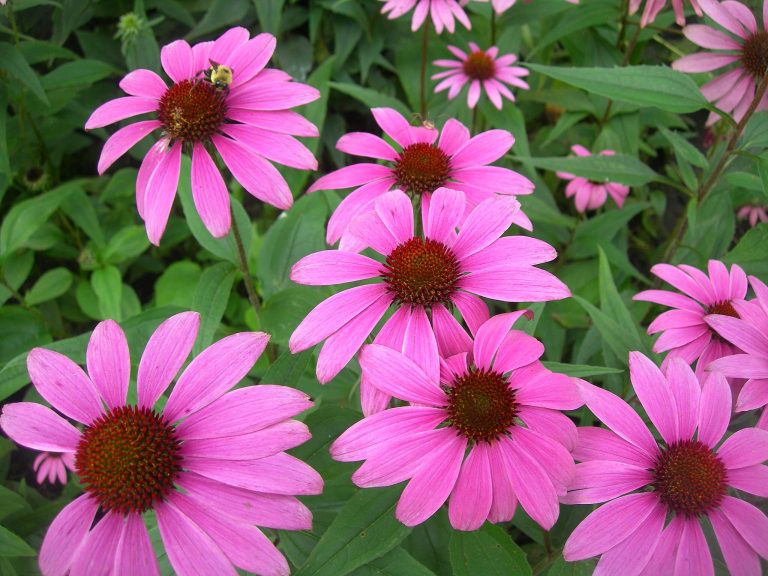Echinacea, or purple coneflower, is well known for its immune-boosting abilities. After gaining popularity among eclectic physicians in the late 1800s, echinacea became one of the most common herbal remedies sold commercially.
While many studies have verified echinacea’s potent medicinal value, unregulated production led to discrepancies in quality, and some reports emerged that the herb was not effective after all, tarnishing its reputation. For the best product, you might want to grow it yourself. Luckily, these beautiful plants are easy to grow!
Echinacea plant
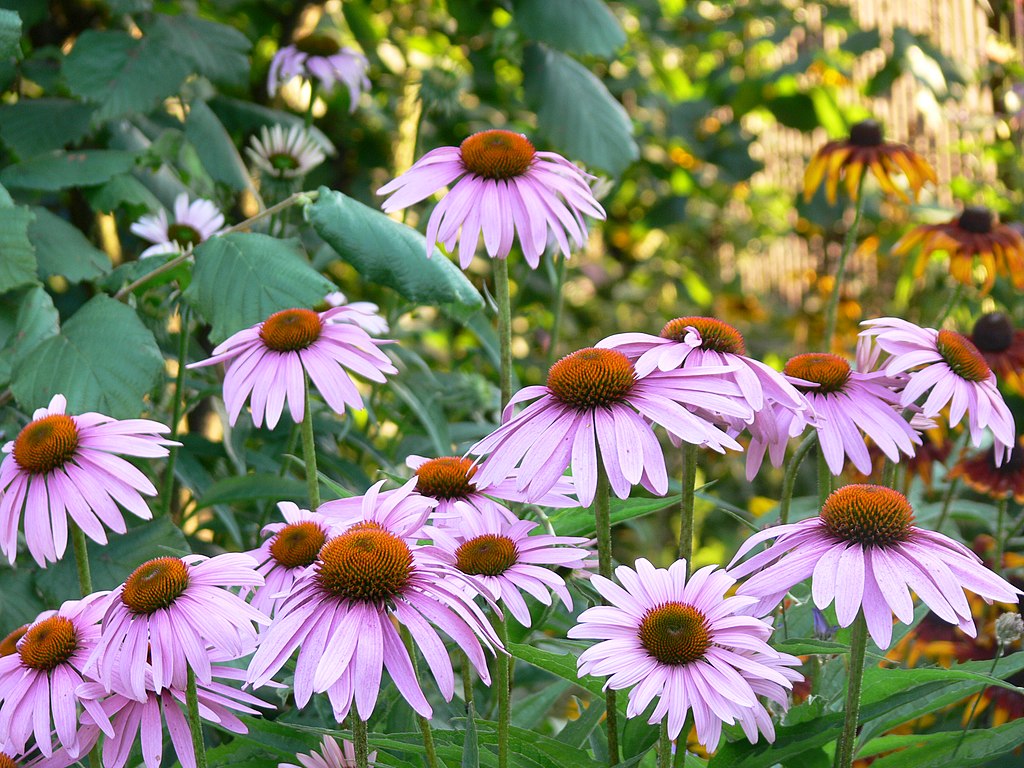
Echinacea is a genus in the daisy family native to eastern and central North America. Of the ten recognized species, two are commonly used for medicinal applications, which go far beyond cold remedies.
While Echinacea angustifolia and Echinacea purpurea are both sturdy, upright plants with coarse, hairy, lanceolate leaves and composite flowers with purple petals and spikey centers, there are subtle differences to consider when making medicine.
For identification purposes, E. angustifolia has somewhat drooping petals of a paler purple, and narrow leaves, while E. purpurea has darker purple petals and broader leaves. E. angustifolia has a deeper root system, and is mainly used for its root, while the whole plant of E. purpurea is considered medicinal.
Success
You are now signed up for our newsletter
Success
Check your email to complete sign up
With its showy, lasting blooms, echinacea has long been popular among gardeners, and countless hybrid plants have been cultivated for variety in flower color, number of petals, and size of the plant. While such hybrids can be delicious additions to a visual feast, it is not clear whether they have the same medicinal properties or environmental benefits that native plants offer. For traditional remedies, it is recommended to stick with the original prairie plants used by Native Americans.
Traditional uses
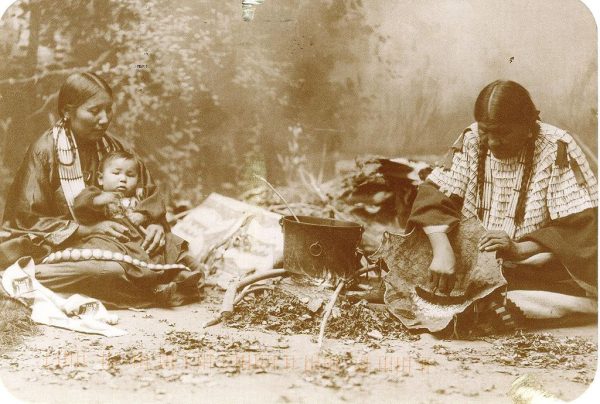
Oddly enough, Native Americans used echinacea for just about everything except its main function today — to boost immunity against colds and flu. It was used by various native tribes to treat all sorts of pain and swelling, and addressed more maladies than any other herb.
European settlers were introduced to its medicinal value by their neighboring tribes, who had each found it good for something. For instance, echinacea treated toothaches for the Comanche and Crow tribes; coughs for the Chocktaws and Kiowa; inflammation and sepsis (life threatening inflammation) for the Dakota and Omaha, respectively; gonorrhea for the Lenape; and rattlesnake bites for the Sioux and the Pawnee.
Dr. H. C. F. Meyer, an eclectic physician living in Nebraska, was so impressed with this last application that he spent several years working with echinacea to formulate his own “blood purifier,” which he claimed could cure everything from rattlesnake bites to typhoid.
Eclectic medicine, an American movement that incorporated the use of botanical remedies, began around 1850 and remained popular for about a century. It was well underway when Meyer introduced his panacea in the 1870s, but his claims were so outrageous that he naturally met with resistance.
In a lengthy attempt to promote his remedy, Meyer was initially dismissed as a quack by prominent physicians. His persistence included several demonstrations of its effectiveness after injecting himself with venom, as well as sending the doctors large samplings of echinacea root, and finally even the whole plant. Once they were moved to begin experimenting with the plant, other eclectic physicians became enthusiastic advocates as well, and echinacea gained recognition as a potent healing herb.
Echinacea’s current use as a preventative for colds and flu is said to have arisen from misinformation, where it was communicated that the American Indians used the herb for this purpose, when they actually used it for treatment rather than prevention.
Medicinal properties of echinacea
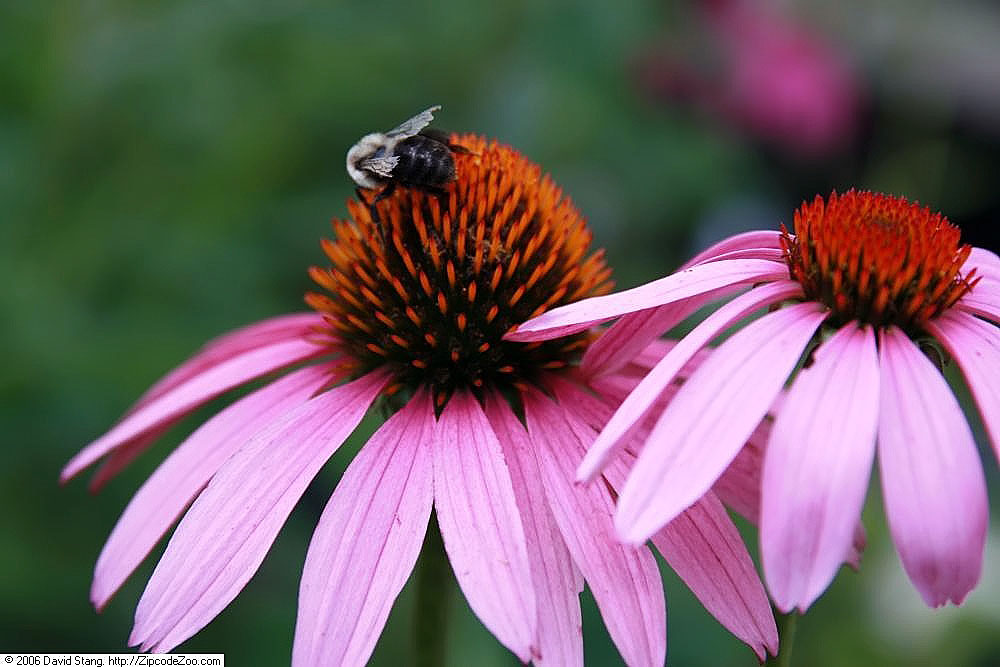
As an enduring, popular remedy, echinacea has been pretty thoroughly researched, and there is little question of its medicinal value. Herbalists consider echinacea a powerful alterative, as it moves the body towards health through with a variety of actions:
- Immune booster — stimulates immune system and the production of white blood cells
- Increases phagocytosis — the removal of pathogens and metabolic waste
- Anti-inflammatory — due, at least in part, to bioactive compound alkylamide, which has a notable tingly, numbing effect.
- Antiviral — effectively reduces viral load by moderating entry, internalization and replication.
- Immunomodulator — can balance the body’s immune system’s response with antiviral and anti-inflammatory effects.
- Detoxifying — promotes the flow of lymph, while stimulating saliva and other bodily secretions.
- Inhibits hyaluronidase, a flesh dissolving enzyme found in many venoms.
- Generally considered safe — can be taken by children, both internally and externally, and for extended periods, although people with autoimmune disorders should consult their physician before taking echinacea.
Growing echinacea
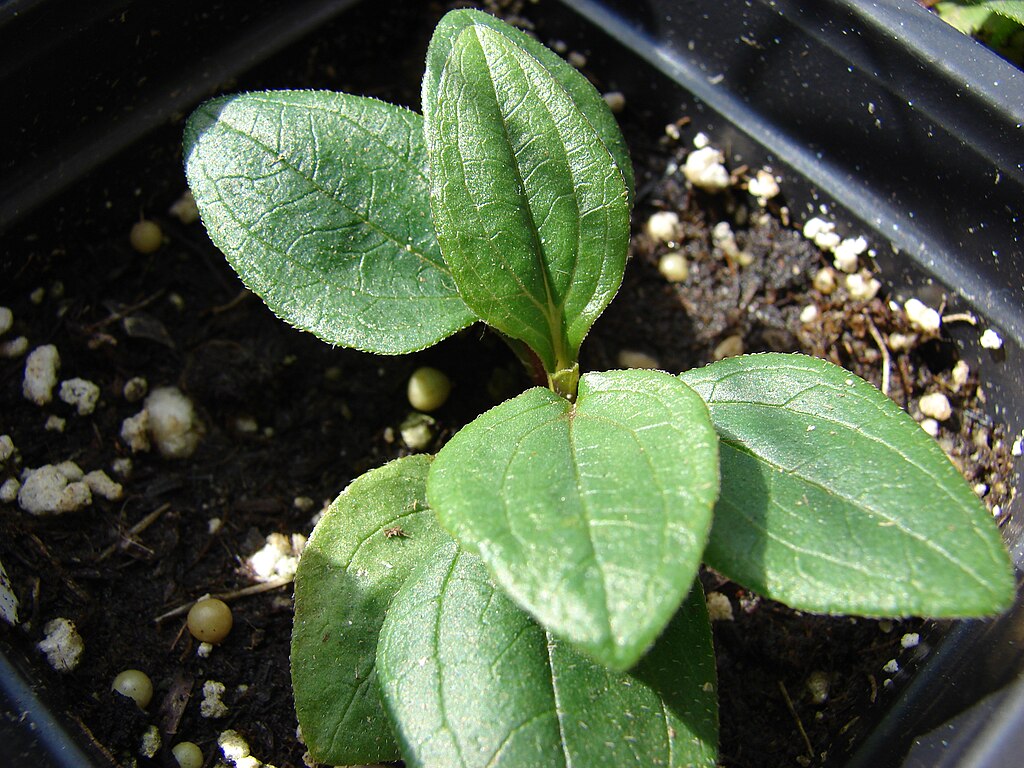
As a native perennial, echinacea is easy to cultivate and beneficial to our native pollinators. The plant can be grown from seed, divided, or transplanted from pots, and will self-sow under favorable conditions. In a diverse garden, this low-maintenance plant shows good resistance to pests and disease.
From seed
Since echinacea seeds require cold-moist stratification to germinate, they can be sown outdoors in the fall, to emerge in the spring. For earlier germination, place the seeds in a moist paper towel in the refrigerator for a few weeks. Then, at least four weeks before final frost, sow seeds ⅛ inch deep in small containers of starting mix. Placed in a sunny window with steady moisture; they should germinate in two to three weeks.
By the time they have developed into small plants, it should be safe to plant them out without danger of frost. Echinacea is not picky, but will do best in a sunny area with rich, well drained soil. Water young plants regularly and they will develop a deep root system capable of tolerating drought.
Propagation by division
Established plants will form dense clusters that can be divided for propagation. This is also a good opportunity for harvesting the medicinal roots, and it can be done every three to five years without harming your plants.
In fall or early spring, locate your plants and dig up the root mass from thoroughly moistened soil. With a sharp spade, knife or saw, cut each clump into two or three pieces. These sections can be re-planted directly with 18 inch spacing, or washed and prepared for medicinal use.
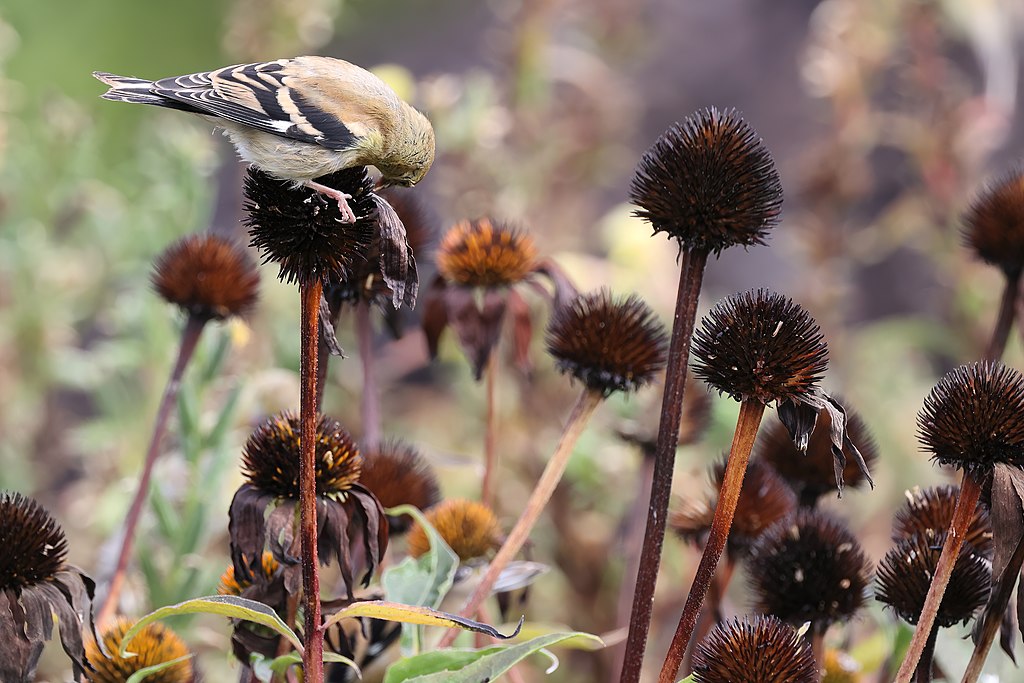
Home remedies with echinacea
As previously mentioned, the whole Echinacea purpurea plant has medicinal compounds, which makes it ideal for quick remedies from either fresh or dried botanicals. Flowers and leaves can be harvested and dried for off-season use, or picked fresh on demand. Roots may be more potent, but also require more effort to collect; and, for the health of your plants, should not be harvested too frequently.
Tea
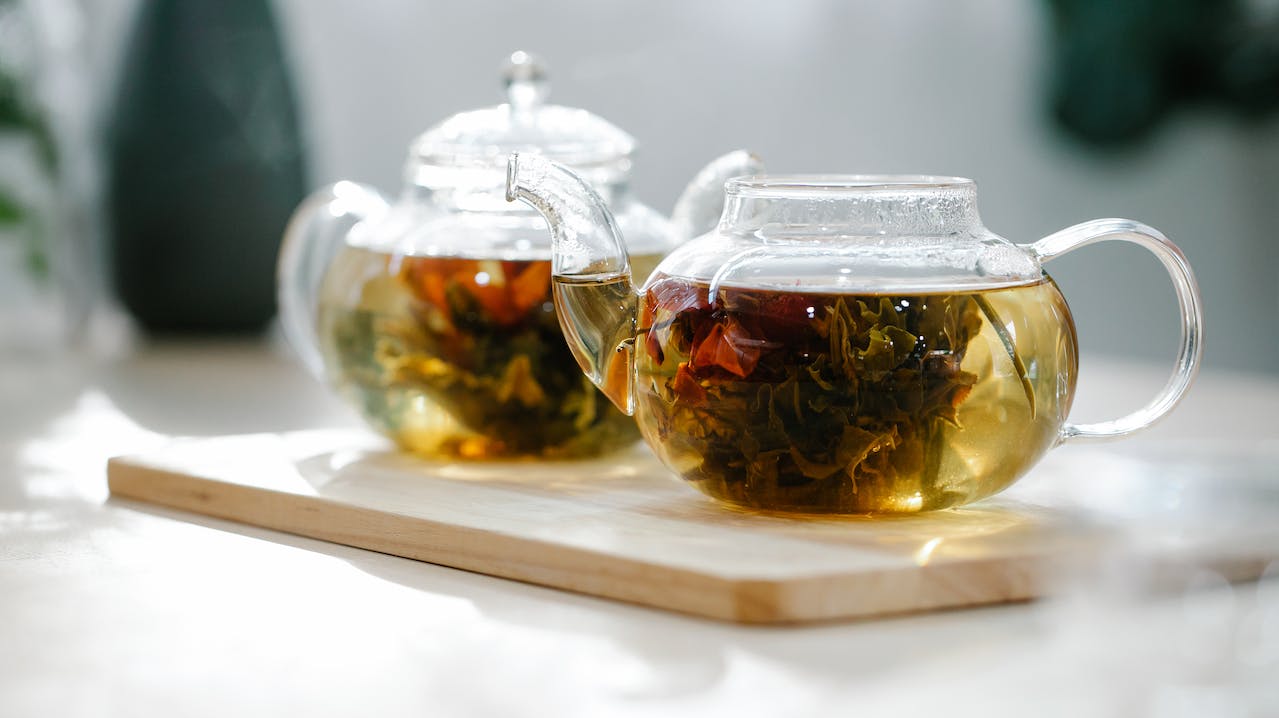
An herbal infusion, or “tea” made with echinacea is a simple and effective way to reap the benefits of this herb. Tea can be made from dry or fresh material (leaves, flowers and/or roots if you have them).
Harvest fresh, young flowers, and large, healthy leaves. If you are planning to dry them, flowering stems are convenient for hanging. Always harvest above the next node to encourage new growth.
Stems can be hung in any clean, arid environment out of direct sun, while leaves and flowers can be dried flat or placed in a dehydrator on low heat. When the plant material is completely dry, crush it into smaller pieces and store in an airtight container for later use.
To make tea, use one heaping tablespoon of dry herb (or two fresh) per cup of boiling water. Allow it to steep for 10 minutes, and consume warm. Echinacea alone has a mildly sweet, earthy flavor and causes a tingly sensation; but you might like to add mint, lemon balm, or a natural sweetener.
A stronger decoction can be made by simmering the herb for twice as long. This can be used externally for topical ailments.
Glycerite

Herbal extracts are often used to draw out the active medicinal compounds for preservation and ease of application. The most common DIY extract is a tincture. To make this, the chopped roots — fresh or dried — are covered in strong (80-100 proof) alcohol for a few weeks. The sealed jar is shaken daily at first and then every few days, until it is time to strain and bottle the remedy.
But since echinacea is best taken frequently, and is frequently given to children, many would rather have a non-alcoholic substance; in which case, a glycerite is the answer. Similar to tinctures, the roots of Echinacea angustifolia are recommended for a glycerin extract. They can be fresh or dried, and this will determine the ratio of herb to solvent.
If using dry echinacea, use one part (by weight) finely chopped roots, to four parts solvent, or menstruum. The menstruum consists of filtered water (about 40 percent) and food-grade vegetable glycerin (about 60 percent). For example:
- 2 ounces dried root
- 3.2 ounces water
- 4.8 ounces of glycerin
For fresh herbs, the ratio is one part (by weight) of crushed/chopped botanicals to two parts solvent. In this case the menstruum can be between 70 and 100 percent glycerine. For example:
- 3 ounces fresh root
- 6 ounces glycerin
If using dried roots, allow them to rehydrate a bit by adding the water first; then stir in the glycerin. Fresh roots are simply pressed into a clean jar and covered in solvent. Seal the jar tightly so the essential oils don’t evaporate in processing— which can be the three-week exercise described above for tinctures, or an abbreviated warm bath as follows:
Place the sealed jar on a rack or small cloth in a crockpot, slow cooker or instant pot. Fill the pot with enough water to reach the level of your mixture in the jar(s). Warm the glycerite on the lowest setting, or “slow cook” on an instant pot for three days. After this, strain, bottle and label your remedy.
Application of echinacea remedies
Colds and flu
As preventative medicine, drink a cup of echinacea tea daily at the start of cold season, before and during travel, or any time you feel vulnerable to infection. If you come down with a cold or flu, a half teaspoon of echinacea glycerite every four hours can help you recover more quickly. Children over two years old can take half the adult dosage, twice daily.
Healing
For treating infection or inflammation, a simultaneous topical and internal application is recommended. Small, frequent doses of tea or extract will boost your immunity, while the afflicted area is addressed with a fomentation — a cloth soaked in a warm decoction.
Sore throats
Make a throat spray from a strong tea or diluted glycerite, and apply regularly. Drink echinacea tea or take a half teaspoon glycerite three or four times daily.
Alternative medicine
While further research is necessary, echinacea has shown promise in the treatment of cancer, AIDS, COVID, and other serious illnesses.
READ ALSO:
- For Powerful Traditional Remedies, Know and Grow Medicinal Herbs (A): Arnica
- For Powerful Traditional Remedies, Know and Grow Medicinal Herbs (B): Beautyberry
- For Powerful Traditional Remedies, Know and Grow Medicinal Herbs (C): Comfrey
- For Powerful Traditional Remedies, Know and Grow Medicinal Herbs (D): Dill



